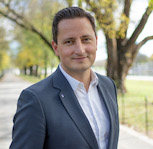
Affordable medicines for all EU citizens
The city of Padua in Europe is considered as the birthplace of modern medicine, but for all its medical prowess, Europe now stands more divided than ever, when it comes to health equity for all its citizens.
Whereas in many areas like economy or rights and liberties the EU is synonymous with solidarity, in terms of health we continue to stand divided.
There is still a persisting “Iron Curtain” with regards to health services, separating East from West, and although patients across Europe suffer from the same types of illness, they rarely have access to the same treatment options.
Ensuring equal access to affordable medicine for all EU citizens is not an easy task, and there are several big obstacles we need to overcome such as speeding the process of authorization of novel treatments, reducing frequencies of medical scarcity, improving medicine pricing mechanism and securing proper health infrastructure in all Member States.
Access to novel medicine is hindered by difficulties of market penetration of novel treatment due in part to unharmonized regulations in different Member States. This puts innovative companies in the position of seeking 27 market authorizations for the same product, making populous countries more attractive for industry to first seek authorization than less populous ones, which have a delay of up to 3 to 4 years in terms of medicine availability.
Digitalization and standardization of data required for market authorization across different A centralized approach to market authorization for novel medicines like the one used for the market authorization of the COVID-19 vaccine could go a long way to speeding up the process of placing invaluable and much needed medicines on the market and making them widely available for patients across the Union with life threatening conditions.
Member States can drastically reduce the bureaucratic burden behind the application process for authorization in 27 different countries thus ensuring that medicines become available at around the same time across the whole Union.
Fighting medicines scarcity is yet another major factor to health inequality and the rise of unmet medical needs. Some of the main causes for medicine shortages are disruptions in the supply chain due to “black swan” events like the COVID-19 pandemic or due to market practices such as market viability of efficient but low value medicine, or to parallel trade, which causes an outflow of essential medicine and manufacturing problems.
Securing access to medicine is of strategic importance and investing in a homegrown pharmaceutical industry as well as relocating production sites from third countries and diversifying supply chains so that critical disruptions are less probable are actions that we, in the European Parliament, want to see implemented.
Treatment adherence for patients fighting with life threatening diseases is crucial and we need to make sure that the burden of living with an illness is not increased due to unreliable access to necessary medication.
The lack of a comprehensive medical infrastructure is a problem that plagues mostly Eastern Member States, where investment in health infrastructure has been minimal in the past 30 years and where isolated rural communities lack reliable access to hospital and ambulatory specialist care.
Lack of access to healthcare means late diagnosis which in some cases translate to bad prognostics limiting treatment options or even putting patients in a situation where no treatment is available. Even when treatment is possible, adherence to it for long periods of time, especially for chronic diseases, might be almost close to impossible for patients living in these rural communities, preventable deaths rates being much higher in Eastern countries than in Western ones.
High medicine pricing is one of the driving factors for unmet medical needs due to high costs that neither patients, nor health insurances can afford to pay. In the past couple of years, the cost of novel anti-cancerous drugs has increased annually on average between 9 to 21 per cent. In a study published in the Journal of Oncology Practice by Ronok Saluja et al., the predicted main incremental anticancer drug cost increased from $30,447 in 2006 to $161,141 in 2015 (more than fivefold).
This trend is worrying since clinical benefits of these new medications did not improve at such a dramatical pace, sparking questions on the motives behind such increase in pricing.
When it comes to medicines pricing negotiations, there is a huge asymmetry between governments and the pharmaceutical industry, which clearly favors the latter, in terms of access to commercial information, the real costs of research and development and the cost of production.
Furthermore, Member States compete to outbid one another in order to secure essential medicine and less powerful economies in Europe are finding it increasingly harder to finance in a sustainable way the expense on medicines.
Common Joint Procurement of innovative and orphan medicines, which tends to have higher costs, could be our answer to level the playing field with regards to price negotiation all the while ensuring equal access to medicine for all citizens regardless of the economic might of their native country.
We have seen this Joint Procurement mechanism in action during the purchasing of COVID-19 vaccines, without which today we would live in a Europe divided between those that have the vaccine and those that have not.
The future Europe of Health needs to be built on the need to secure equal and equitable access to treatment for all European citizens regardless of their nationality, putting patients above national political interests.




